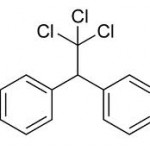If you like this blog, send it to 3 (or more) of your friends and encourage them to sign up. Let’s keep the conversation going!
If you’ve been reading this blog for a bit, you know I read the New York Times. I do that because I live in a major city (San Francisco) that has one of the poorest excuses for a major newspaper — The San Francisco Chronicle — you can imagine. (When we used read it, we called it the SF Comical.)
So, I was reading along a week or so ago, and I find an article entitled “As an Insecticide Makes a Comeback, Uganda Must Weight Its Costs.” I had to read 5 paragraphs into the story to learn that the insecticide referred to in the headline was DDT. I was appalled, for many reasons.
DDT: A Long, Bad History
One reason for my strong reaction is that I have a long memory. I remember Rachel Carson’s 1962 book “Silent Spring,” which warned so compellingly of the dangers of DDT  for all living things. That book lead to banning of the use of the insecticide in the U.S. 10 years later.
for all living things. That book lead to banning of the use of the insecticide in the U.S. 10 years later.
Another reason is that DDT has been linked to breast cancer. First, by women with breast cancer who remember the times in summer they spent running after the trucks spreading the cool mist of DDT as it was being sprayed to kill mosquitoes when they were children. And later by the important work of Barbara Cohn, an epidemiologist whose work established the risk of early exposure to DDT for later the development of breast cancer.
One more reason – as if I need one – is that DDT has been associated with neurological disorders in those exposed to it. I now have a major neurological disorder after having had breast cancer in my early ΄40’s, so I’m sensitive to the consequences of the things to which we’re exposed that may increase the risk of all sorts of awful diseases.
The Re-emergence of DDT
It’s not unusual that when something we’re doing in the U.S. proves not to be so good for us, someone figures out how to send to some unsuspecting (or relatively powerless) country overseas so their people can have the consequences. This happened with our old, high-radiation-producing mammogram machines, and it’s happening now with rBGH, the hormone given to cows to make them produce more milk. So, we shouldn’t be surprised that it’s happened with DDT, too.
The ostensible reason for the re-introduction of DDT, mostly in Africa, is to control malaria, a disease that kills more than one million people, including, including 20% of African children under 5 years of age. It’s an awful disease, and it’s spread by mosquitoes. DDT is used to kill mosquitoes.
There are Other Options Besides DDT
There is no dispute that there is a need to control malaria, and to do so by controlling the mosquitoes that spread them. But that doesn’t mean that insecticides like DDT are the answer. Over many years, many other approaches have been tried, and all have had some success. They include: draining wetlands, improving sanitation, indoor residual spraying (with things other than DDT), and mosquito nets (impregnated with insecticide or not).
 So why do we resort to a toxic like DDT? For one thing, the World Health Organization began supporting it use against malaria in 2006. After all, DDT was effective for a time in killing mosquitoes. But it also has the additional consequence of making people sick, sometimes in the short term, and sometimes in the longer run.
So why do we resort to a toxic like DDT? For one thing, the World Health Organization began supporting it use against malaria in 2006. After all, DDT was effective for a time in killing mosquitoes. But it also has the additional consequence of making people sick, sometimes in the short term, and sometimes in the longer run.
As is always the case with insects exposed to insecticides, mosquitoes have now become resistant to DDT. In the long run, the insects get stronger, and pouring more poisons on them won’t help.
Impact of DDT on Organic Farming 
The May 23 story in the New York Times that captured my interest wasn’t about the health effects of DDT. It was about how the spraying of the insecticide had wiped out the growing organic farming movement in Uganda.
On the same day, the business section of the New York Times, ran an article about how strong sales of organic foods were attracting investors. So, as the market for organic food grows, its farming is being wiped out in Uganda.
Organic farming had been an effective economic development strategy for Uganda, encouraged and supported by the US. But the US also supported spraying DDT, which made the produce from the affected farms no longer organic.
What’s Good for the Goose . . .
In the United States, we know the dangers of DDT. That’s why we ban the stuff. But we don’t seem to mind if other places use it – we even encourage them to do so. And Uganda isn’t the only country where DDT is being used. As of 2008, there were a dozen countries – including India and countries in Southern Africa – using DDT, and the number has almost certainly risen with the support of the U.S. and the World Health Organization.
US policy is at cross-purposes, and certainly not for the first time. But if we don’t want DDT sprayed on us, why do we allow it to be sprayed on people in Africa?
Inquiring minds want to know.
© Barbara A. Brenner 2011


Do you know why the World Health Organization is supporting use of DDT now, instead of some of the other methods you mention?
And cynical me is wondering whether the increasing bedbug problem will result in people in the U.S. asking that the DDT ban be lifted here.
Cost-effectiveness. Residual spraying with other insecticides is far more costly in these settings. The WHO recommendations also include long-lasting impregnated bednets as part of the prevention package, which are distributed en masse through prenatal clinics, child at-risk clinics, and through social marketing campaigns. The package also includes sanitation efforts, improved screening, detection, and treatment, and massive education campaigns. They’re bringing back DDT because the other pieces have not been sufficient.
I believe the WHO is supporting use of DDT because they have been persuaded by the people working on malaria that it’s the most effective approach. Scary. And I hope your cynicism is off the mark, but I’ll be surprised if it is.
Here’s my cynicism….. $$$$$$$$….. that’s why DDT is coming back……. perhaps to dump the old stuff; perhaps to “brand” a whole new market; perhaps for some reasonable reasons…… I believe it is for the $$$$$$$$$$$. And the children, again, will get the most harm from exposure, setting them up for later diseases.
To read more on this issue, here are links to two short pieces – one from the WHO and one from the WSJ – http://online.wsj.com/article/SB124303288779048569.html
and http://www.who.int/malaria/publications/who_ddt_malaria_control-june.pdf
(don’t you LOVE Google?) You will have to copy and paste, I think.
IMHO, the issue here may be that malaria mostly affects the poor and has been well contained (although not eridicated) in much of the 1st & 2nd world (really, if there is a “3rd world” isn’t there also a 1st and 2nd?) It is inexpensive, on a current cost basis, to spray DDT to kill mosquitos and the future costs are, well, in the future. Its not that different from our politicians attacking one side’s policy on (pick anything) without presenting a reasonable alternative.
Enjoy your holiday weekend! Barb 7 Susie can’t make it to our house for the family cookout so there should be leftovers. Our address is
Disregard for the health of so-called third-world people is a despicable — and old — story. In the late 1980s, when the Dalkon shield IUD that caused so many injuries and deaths to American women was banned in the US, the manufacturer boxed up their remaining IUDs and shipped them abroad for insertion into unsuspecting African women.
PS — Count me among the breast cancer survivors who ran behind DDT trucks on summer evenings on Long Island during the 1950s.
My heart always gets so twisted up around things like this that bring to light the on-going madness that keeps getting repeated over and over, versus learning from our past mistakes. They can say it’s because it’s cost-effective, but that is just not true! We pay a high price that can’t even be added up to a bottom line. Thanks Barbara for your tenacious spirit that is so committed to shining the light on what they want to do in the name of: fill in the blank____________. May we continue to know the truth of what “one world”, “interconnectedness”, and the value of “ALL human life” is, and make choices that reflect these absolutes!